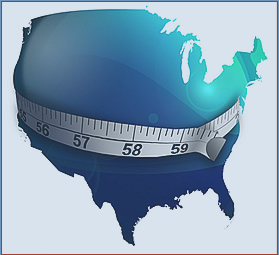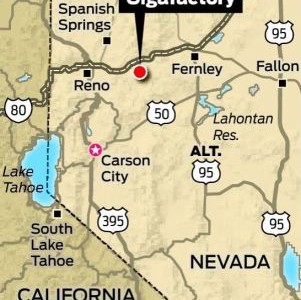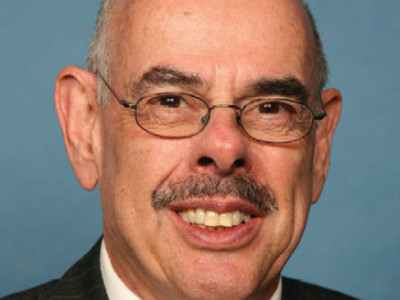Regulatory Policy
Groundwater Management Lite for California
New State Groundwater Legislation a Key Step Forward, But No Immediate Fix or Long-Term Panacea
The California Legislature, in the waning hours of its 2014 session, enacted legislation creating a first-ever statewide system of groundwater management. The three-bill package (SB 1168 [Pavley]; SB 1319 [Pavley]; and AB 1719 [Dickinson]) is expected to be signed into law by California Governor Jerry Brown before the end of this month, and will take …
Continue reading “Groundwater Management Lite for California”
CONTINUE READINGThe State(s) of Obesity
There are big differences between states, but this really is a national epidemic.
State of Obesity, a joint project of the Trust for America’s Future and the Robert Wood Johnson Foundation, has released a fascinating report about adult obesity. There are large national disparities. The obesity rate is over 35% in West Virginia and Mississippi, but only 21% in Colorado. Despite these disparities, obesity rates have grown everywhere since 1990, …
Continue reading “The State(s) of Obesity”
CONTINUE READINGWhy Tesla’s Nevada Gigafactory Could Be Bad For The Environment, Compared To A California Site
Electric vehicle pioneer to announce its siting decision today
Some California environmentalists may be celebrating now that Tesla has apparently decided to build its $5 billion “gigafactory” in Nevada instead of California. Lawmakers here had toyed with the idea of weakening the state’s signature environmental law, the California Environmental Quality Act (CEQA), to help expedite review on the factory and therefore encourage Tesla to …
CONTINUE READINGMisleading Attacks On California’s New Transportation Analysis Under CEQA
Big Law Firm Holland & Knight Misrepresents New State Guidelines
Last year, the California legislature passed badly needed reform to change how agencies evaluate a project’s transportation impacts under the California Environmental Quality Act (CEQA). The Governor’s Office of Planning and Research (OPR) was tasked with coming up with new guidelines for how this analysis should be done going forward. As I blogged about, the …
Continue reading “Misleading Attacks On California’s New Transportation Analysis Under CEQA”
CONTINUE READINGClosely Confined Chickens, Interstate Conflict & the Dormant Commerce Clause
Is Proposition 2, California’s Pioneering Animal Welfare Law, Unconstitutional?
Last week witnessed a most interesting constitutional showdown between sovereign states in U.S. District Court in Sacramento. At issue is animal welfare legislation California has enacted both at the ballot box and through its elected representatives. The enemy combatants are a coalition of midwestern states led by Missouri, aligned against the State of California, with …
Continue reading “Closely Confined Chickens, Interstate Conflict & the Dormant Commerce Clause”
CONTINUE READINGFDA Discretion and Animal Antibiotics
FDA has stalled for 30 years in regulating antibiotics in animal feed. A court says that’s O.K.
The FDA seems to be convinced that current use of antibiotics in animal feed is a threat to human health. But the Second Circuit ruled recently in NRDC v. FDA that EPA has no duty to consider banning their use. That may seem ridiculous, but actually it’s a very close case legally. The court’s discussion of Massachusetts …
Continue reading “FDA Discretion and Animal Antibiotics”
CONTINUE READINGGuest Blogger John Nagle: The Clean Air Act Applies to Greenhouse Gases Because of What Congress Said, Not Because of What Congress Intended
A Reply to Megan Herzog
In my recent CNN op-ed and in her previous post, Megan Herzog and I agree that the Supreme Court has properly interpreted the Clean Air Act (CAA) to apply to the emission of greenhouse gases. We just disagree about the correct manner in which to reach that conclusion. Judges and scholars generally favor an originalist …
CONTINUE READINGClimate Change Adaptation Strategy: Can California Do More?
Is Increased Reliance on the Public Trust Doctrine an Essential Part of Effective State Adaptation Policy?
I often tell students in my Climate Change Law and Policy course that adaptation–that is, how we can best adapt to the unavoidable impacts of climate change–is the poor stepchild of the debate over greenhouse gas emissions and climate change. By that I mean that climate change mitigation (i.e., how to reduce greenhouse gas emissions) generates far more …
Continue reading “Climate Change Adaptation Strategy: Can California Do More?”
CONTINUE READINGA Response to John Nagle: The Clean Air Act as a Whole Supports Climate Regulation
Debating the Relationship between the Healthcare Fight and Climate Regulation
Last week, conflicting federal court decisions regarding the Patient Protection and Affordable Care Act, commonly known as the ACA or “Obamacare,” set the nation abuzz. In Halbig v. Burwell, the D.C. Circuit Court of Appeals struck down an Internal Revenue Service (IRS) regulation providing federal subsidies to low-income taxpayers who purchase health insurance through a …
CONTINUE READINGCongressman Waxman Tells FERC: Read UC Berkeley’s Climate Change Study
Henry Waxman urges FERC to act on greenhouse gas emissions.
In a Congressional hearing this morning, Congressman Henry Waxman had a rare chance to face all five sitting members of the Federal Energy Regulatory Commission (FERC) at the same time to talk about climate change. He took the opportunity to point out UC Berkeley’s recent report on FERC’s authority under existing law to reduce greenhouse …
Continue reading “Congressman Waxman Tells FERC: Read UC Berkeley’s Climate Change Study”
CONTINUE READING








